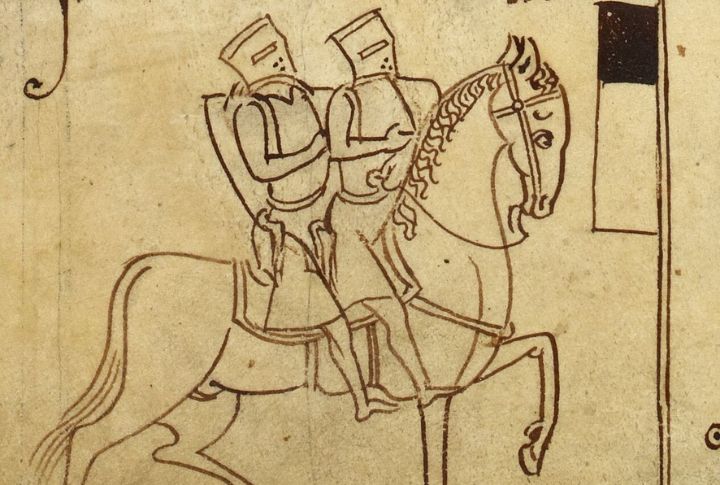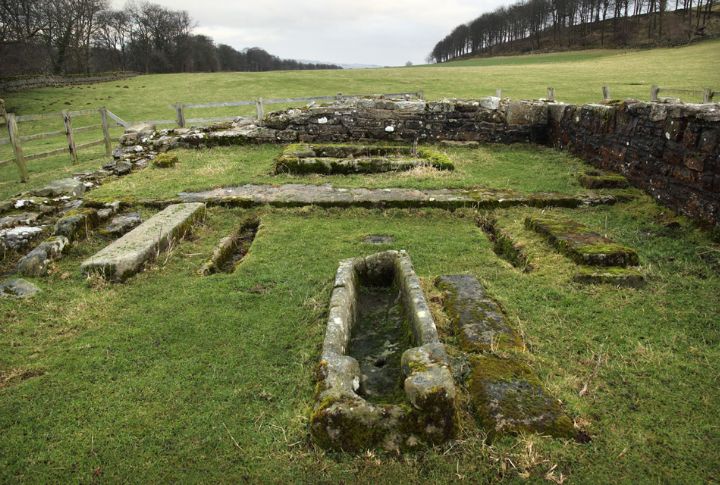
Most people picture the Knights Templar charging into battle in shining armor. However, that image skips over what ruled their actual day-to-day life. These men followed a strict system where every action was tied to discipline and structure. Nothing was left to chance, and personal comfort wasn’t a priority. Here are 10 lifestyle practices that shaped everything about how the Knights Templar lived and survived.
Morning Prayers Began Before Sunrise

Each day began at 4:00 AM with Matins, a required communal prayer. At that hour, darkness cloaked their surroundings, and silence was strictly observed. After that, the Templars followed the canonical hours of the Catholic Church. They prayed up to seven times daily. Morning rituals like this shaped the rhythm of their disciplined routine.
Meals Were Strictly Monastic And Silent

Meals followed the same rigid order that defined the Templars’ daily life. Only two were allowed per day, and each one had to be eaten in silence. While Scripture was read aloud, knights listened without interruption. Meat was limited to designated days or medical needs, and wine was always diluted to promote restraint.
Armor Maintenance Was A Personal Duty

Armor upkeep was considered a personal responsibility, so each Templar was expected to clean and repair his own gear without assistance. Since it was part of spiritual discipline, regular inspections reinforced the habit. Rust wasn’t just neglect; it suggested sin. Although blacksmiths were present, their role ended at forging, not maintaining a knight’s equipment.
Each Knight Answered To A Commander

No Templar made decisions solo—every knight had a commander calling the shots. These leaders ran local bases, known as commanderies, and kept discipline tight. Any promotions? Those came from staying loyal and following orders to the letter. Above them stood the Grand Master, who expected total accountability.
Training Included Swordplay And Horsemanship

Even when battles weren’t near, Templars trained like they were. Daily drills included swordplay, lance work, and mounted combat. Since horses played a vital role, they were trained with strict precision. These exercises took place inside fortified commanderies. If someone got injured, no one flinched, and it was seen as an honorable cost.
Manual Labor Was Required For All

People usually imagine knights enjoying luxuries between battles. Still, that image fails to reflect how the Templars really lived. After setting aside their swords, many turned to the land for farming and handling daily tasks. Physical work brought humility and strengthened the belief that discipline held greater value than comfort ever did.
No Personal Wealth Or Property Allowed

Templars took strict vows of poverty, renouncing all personal ownership—including inheritance. Any gifts from family were surrendered to the Order or shared communally. Every item they used was issued by the Order, ensuring centralized control of resources and allowing all funds to support the Crusade effort.
The Dress Code Was Symbolic And Regulated

They didn’t just fight with discipline; they dressed with it, too. White mantles marked the knights, with red crosses symbolizing purity and martyrdom. Sergeants, by contrast, had to wear darker colors. Cloaks stayed on all year, no matter the heat. And if clothes looked dirty or worn? That meant punishment wasn’t far behind.
Letters And Contact With Family Were Rare

Templar knights had limited contact with their families. Personal letters were uncommon and required approval from a commander. The strict oversight discouraged ongoing communication, and many knights gave it up entirely. When letters did arrive, they often came long after events had passed—reinforcing loyalty through distance and discipline.
Strict Silence Hours Were Enforced

Silence was strictly observed in designated areas such as the dormitory, where even gestures were prohibited. This practice aimed to maintain spiritual focus and discipline throughout the day. Those who failed to comply faced serious consequences. If broken, the offender faced real consequences, and it was usually fasting or corporal punishment.

